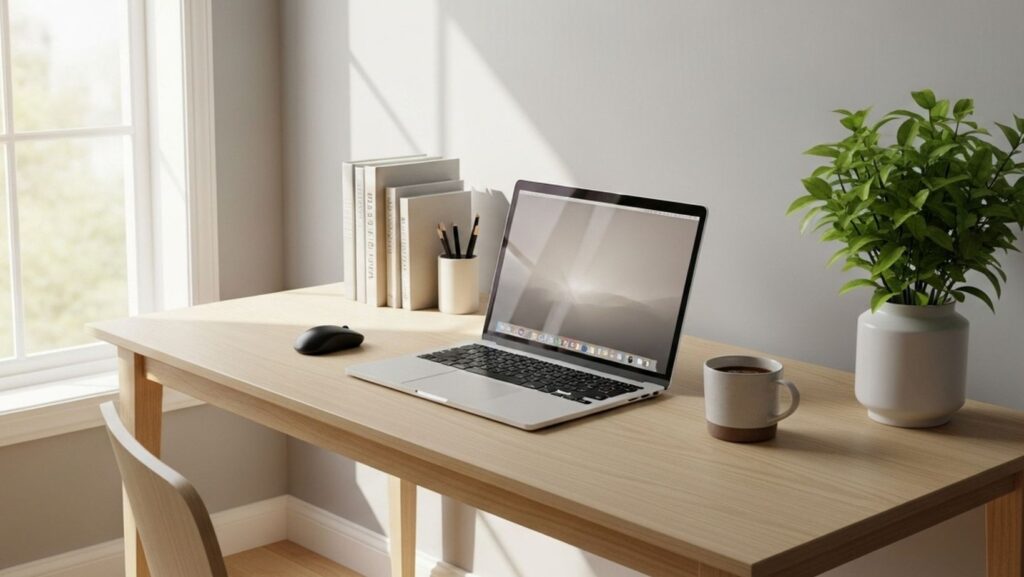Working from home has shifted from a temporary fix to a permanent reality for many. While the kitchen table or sofa might have worked for a week or two, long-term remote work demands a more considered setup. Your makeshift workspace could be contributing to back pain, neck strain, and a slump in productivity. The solution lies in ergonomics—the science of designing your environment to fit you, not the other way around.
Investing in a proper home office chair and a suitable desk isn’t a luxury; it’s essential for your health and performance. This guide will walk you through the ergonomic essentials that can transform your workday, boost your focus, and protect your long-term wellbeing.
Understanding Ergonomics in Your Home Office
So, what exactly is ergonomics? In simple terms, it’s about creating a workspace that promotes good posture, requires less exertion, and prevents injuries from repetitive tasks. An ergonomic setup reduces stress on your body, from your eyes down to your wrists and spine.
When you spend hours a day in the same position, even small discomforts can snowball into chronic pain. A chair that’s too low, a desk that’s too high, or a screen at the wrong angle forces your body into unnatural positions. This can lead to musculoskeletal issues, headaches, and fatigue. By choosing furniture that supports your body correctly, you create an environment where you can work comfortably and efficiently for hours.
Choosing the Right Home Office Chair
Your chair is the cornerstone of an ergonomic workspace. It’s where you spend most of your day, so getting this right is crucial. A quality home office chair is designed to support your body’s natural posture and reduce strain on your back and neck.
Key Features to Look For:
- Adjustability: One size does not fit all. Look for a chair with multiple adjustment points, including seat height, backrest tilt, and armrest position. Your feet should rest flat on the floor with your knees at a 90-degree angle.
- Lumbar Support: This is non-negotiable. Proper lumbar support helps maintain the natural inward curve of your lower spine. Many ergonomic chairs feature adjustable lumbar support, allowing you to position it perfectly for your back. This single feature can dramatically reduce lower back pain.
- Breathable Materials: Long hours of sitting can get warm. Chairs made from mesh or other breathable fabrics allow for better air circulation, keeping you cool and comfortable throughout the day.
- Swivel and Wheels: The ability to move and turn easily without straining is important. A good swivel base and smooth-rolling castors allow you to reach different parts of your desk effortlessly.
A supportive home office chair does more than just prevent pain. By keeping you comfortable, it allows your mind to stay focused on your tasks rather than being distracted by physical discomfort. When your body is properly aligned, you’ll find your concentration and productivity improve.
Selecting the Best Office Desks for Home
Your desk is the other half of the ergonomic equation. It works in tandem with your chair to create a balanced and comfortable workspace. Simply picking any flat surface won’t do; the right office desk for home is vital for good posture and an organised workflow.
What to Consider:
- Desk Height: The standard desk height is around 73 cm, but this isn’t suitable for everyone. The ideal height depends on your own height and your chair’s settings. When seated, your elbows should be at a 90-degree angle, with your forearms parallel to the floor. If a fixed-height desk isn’t right, consider an adjustable one or use a footrest to compensate.
- Surface Area: You need enough space for your monitor, keyboard, mouse, and any other essential items without feeling cramped. A cluttered desk can lead to awkward reaching and twisting. Ensure there’s enough depth to place your monitor at least an arm’s length away to reduce eye strain.
- Storage: Integrated storage, like drawers or shelves, can help keep your main work surface clear and organised. A tidy desk contributes to a tidy mind and a more efficient workflow.
The Rise of the Sit-Stand Desk
Sit-stand desks are becoming increasingly popular, and for good reason. Alternating between sitting and standing throughout the day is one of the best things you can do for your health.

It encourages movement, improves circulation, and reduces the strain that comes from prolonged sitting. Even standing for just 30 minutes every few hours can make a significant difference to your energy levels and posture.
Tips for a Healthy Home Workspace
Great furniture is just the start. How you use your space and the habits you build are equally important for maintaining a healthy home office.
- Perfect Your Posture: Sit back fully in your chair so your spine is supported. Keep your screen at eye level to avoid hunching your neck. Your wrists should be straight when typing, not bent up or down.
- Arrange Your Desk Thoughtfully: Place your most frequently used items within easy reach. Position your monitor directly in front of you to avoid twisting your neck. If you use two screens, position them so you can view both with minimal head movement.
- Take Regular Breaks: The human body isn’t designed to stay still. Set a timer to remind yourself to get up, stretch, and move around every 30-60 minutes. Walk to the kitchen for a glass of water, do a few simple stretches, or just look out of the window to rest your eyes.
An Investment in Your Health and Productivity
Creating an ergonomic home office is not about spending a fortune on fancy gadgets. It’s about making a conscious investment in your long-term health, comfort, and professional success. A proper home office chair and a well-chosen desk for your home will pay dividends by preventing pain, reducing fatigue, and keeping you focused.
By prioritising ergonomic principles, you can build a workspace that not only looks good but also feels good. After all, a comfortable worker is a productive worker.



